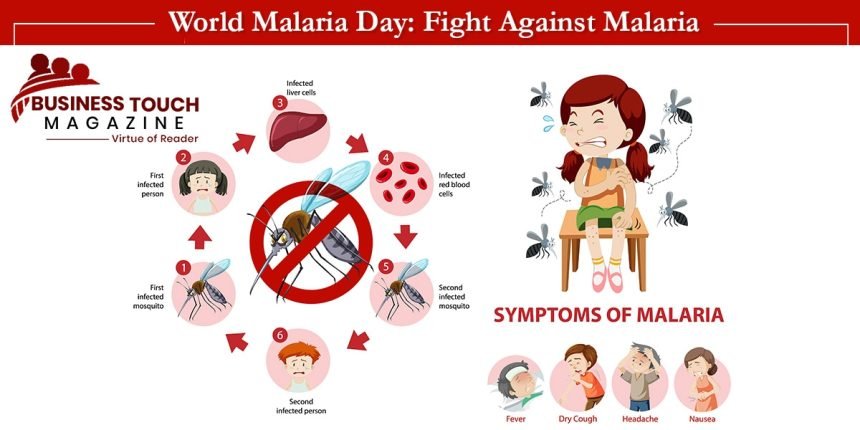April 25 marks World Malaria Day – a day to recognize the important progress we have made as a global community in combating this deadly disease, while also raising awareness and support to continue our work.
ALARMING STATS!
Malaria transmission occurs in 85 countries across five WHO regions. Since 2015, the WHO European Region has been free of malaria.
According to the World Malaria Report 2020, there were 241 million cases of malaria globally in 2020 (uncertainty range 218–269 million) and 627 000 malaria deaths (uncertainty range 583–765 thousand). Malaria case incidence reduced from 81 in 2000 to 59 in 2015 and 56 in 2019, before increasing again to 59 in 2020. Globally, malaria deaths reduced steadily over the period 2000–2019, from 896 000 in 2000 to 562 000 in 2015 and to 558 000 in 2019. In 2020, malaria deaths increased by 12% compared with 2019. The increases in malaria cases are deaths were associated with disruption to services during the COVID-19 pandemic.
Malaria burden was heaviest in the WHO African Region, with an estimated 95% of cases and 96% of deaths; 80% of all deaths in this region are among children aged under 5 years.
241 million Cases estimated malaria cases in 85 malaria-endemic countries in 2020
Incidence- 5% global increase in malaria incidence between 2019 and 2020 due to service disruptions during the COVID-19 pandemic
Mortality – 2% global increase in estimated malaria deaths between 2019 and 2020;
Deaths- 47 000 additional deaths in 2020 were due to service disruptions during the COVID-19 pandemic
What is malaria?
Malaria is a serious disease that spreads when an infected mosquito bites a human. Tiny parasites can infect mosquitoes. When it bites, the mosquito injects malaria parasites into the person’s bloodstream.
If it isn’t treated, malaria can cause severe health problems such as seizures, brain damage, trouble breathing, organ failure and death. The disease is rare in the United States. If you’re travelling to an area where malaria is common, talk to your provider about malaria prevention.
Where does malaria usually occur?
Malaria occurs all over the world, but it’s rare in the United States. It’s common in developing countries and areas with warm temperatures and high humidity, including:
- Africa.
- Central and South America.
- Dominican Republic, Haiti and other areas in the Caribbean.
- Eastern Europe.
- South Asia.
- Islands in the Central and South Pacific Ocean (Oceania).
Who might get malaria?
More than 90% of malaria deaths occur in Africa, and nearly all of the people who die are young children. Malaria is rare in the United States. But people who are infected and travel to the U.S. can spread the disease if a mosquito bites them and then bites someone else.
Anyone can get malaria, but people who live in Africa have a higher risk of infection than others. Young children, older people and pregnant women have an increased risk of dying from malaria. People who live in poverty and don’t have access to healthcare are more likely to have complications from the disease.
What causes malaria?
People get malaria when an infected mosquito bites them. A mosquito becomes infected by biting someone who has malaria. The infected mosquito transfers a parasite into a person’s bloodstream, where the parasites multiply. Five types of malaria parasites can infect humans.
In rare cases, pregnant women with malaria can transfer the disease to their children before or during birth. Very rarely, malaria can transfer through blood transfusions, organ donations and hypodermic needles.
What are the symptoms of malaria?
Malaria symptoms usually appear 10 days to one month after the person was infected. Symptoms can be mild. Some people don’t feel sick for up to a year after the mosquito bite. Parasites can live in the body for several years without causing symptoms.
- Fever and sweating.
- Chills that shake the whole body.
- Headache and muscle aches.
- Fatigue.
- Chest pain, breathing problems and cough.
- Diarrhoea, nausea and vomiting.
- As malaria progresses, it can cause anemia and jaundice (yellowing of the skin and whites of the eyes).
How is malaria treated?
Treatment for malaria should start as soon as possible. To treat malaria, your provider will prescribe drugs to kill the malaria parasite. Some parasites are resistant to malaria drugs. The type of medication and length of treatment depend on which parasite is causing your symptoms.
Protection from mosquitoes
Be aware that you are still at risk for malaria even with the use of protection. To avoid mosquito bites, the CDC recommends the following:
- Apply insect repellent to exposed skin. The recommended repellent contains 20-35% N, N-Diethyl-meta-toluamide (DEET).
- Wear long-sleeved clothing and long pants if you are outdoors at night.
- Use a mosquito net over the bed if your bedroom is not air-conditioned or screened. For additional protection, treat the mosquito net with the insecticide permethrin.
- Spray an insecticide or repellent on clothing, as mosquitoes may bite through thin clothing.
- Spray pyrethrin or a similar insecticide in your bedroom before going to bed.
Concluding
Malaria is a life-threatening mosquito-borne blood disease. The Anopheles mosquito transmits a parasite known as plasmodium to humans. These parasites cause malaria symptoms, including fever, chills, and headaches. Malaria is a serious illness, but it’s possible to prevent it. You can lower your risk of infection by protecting yourself from mosquito bites and taking preventive medications.




